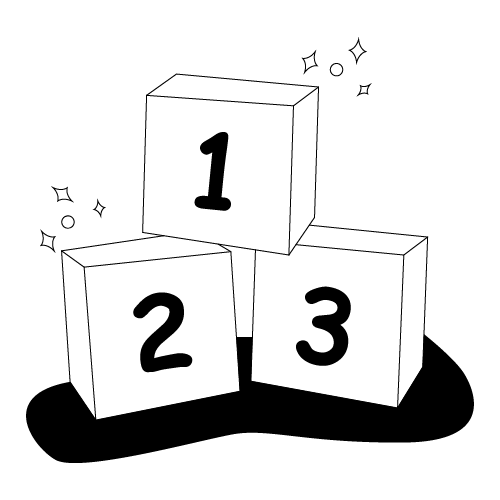Any parent will tell you that kids are naturally curious. They love exploring and trying to make sense of the world around them. But teaching them new things always takes a little patience and the right strategy. Money math is no different. Some of the best methods to teach your little ones about money math include books, applications, flashcards, and perhaps one of the most effective techniques, toys.
Money math toys are tangible things that kids can put their hands on and make sense of. That’s a big advantage considering most of what goes into money is non-physical things. (Don’t believe us? Try teaching interest rates without using actual money.)
To help you out, we’ve compiled top-tier toys to help your kid learn money math. Some of them are award-winning, and others fill a niche that no other product on the market does. But all of them are the best at what they do. Let’s dive in.
Piggy Bank
Let’s start with the classics. A piggy bank helps your kids actively practice savings. And, we’ll be honest, it’s a pretty awesome childhood memory. Beyond that, Piggy Banks can be a team activity. Throw a few pennies into your kid’s Piggy Bank at the end of the week to get them more “invested” (pun intended.) in savings.
The best classic Piggy Bank that we’ve found is here.
Wallet, Purse, Fannypack
Buying your kid a wallet, purse, or fanny pack can be a fun activity. Let your kid pick out the color and design, and then give them some change or small bills to get them started.
For this, we have no direct product recommendations. But we do have a reminder, don’t let your kid take their money to school. It could get lost, confiscated, damaged, and any other shenanigans they get into.
Money Savvy Pig
The Money Savvy Pig is an upgrade to the classic piggy bank. This fun little toy has different slots for different savings purposes. That includes investing, general savings, donating, and spending. That makes it great for teaching children how to save for specific and useful goals. Plus, it comes in some pretty eye-catching colors.
Learning Resources Pretend Calculator
The Pretend calculator might just awaken dreams of accounting. And even if it doesn’t, it helps them learn active money math skills and add money sums together. It can also be a great way to teach exact change.
Fisher-Price Retro Cash Register
The retro cash registers help your kid add and subtract sums while also putting their imagination to work. That means they are engaged on multiple levels, which is one of the best ways to learn anything, especially money math. Check it out here.
Play ATM
The play ATM helps your kid sort money, add totals, and practice real-life money applications. Plus, ATM ownership can be a lucrative form of entrepreneurship. This toy is great for kids who want to learn more about being a business owner and money management.
State Quarter Map
Full disclosure, some of us here at Kids’ Money grew up on the State Quarter Map. So we may be a bit biased. But, it’s a great tool to get your kids interested in money and geography. And it can be a fun parent-child activity. Gather a jar of quarters together and spend an afternoon sorting through them to fill the map. It can be great for teaching, bonding, and getting your kid used to handling money.
Monopoly
Listen, Monopoly is an all-encompassing money game. An hour in, and your kid will have a mortgage, car bill, and a 401k. They’ll learn how to manage their money in dynamic ways and also get introduced to the consequences of poor spending habits.
Youth Savings
Less of a toy and more of an amazing resource, Youth savings accounts can start your kid off on the right foot. Most credit unions and banks let you open a youth savings account for a child of any age. Combine it with a piggy bank and make monthly deposits. This allows your kid to save money over time and learn how interest works.
Play Money
Play money is a great tool for getting your child used to sorting bills, counting them, and understanding their values. And just to soothe any concerns, play money literally says “Play Money” or “Fake Bills” in bold on either side.
Financial Peace Jr.
Financial Peace Jr is a program centered around teaching kids all about money. It includes step-by-step instructions to help you effectively introduce cash flow, investing, and more. You check it out here.
Pizza Co.
Pizza Co. lets your young ones step into the role of business ownership. It’s a dynamic game, so the sums are always changing. It’s especially helpful for teaching division. The parts are durable, and there’s not too much to keep track of.
The Allowance Game
The Allowance Game is centered around budgeting. Plus, it can have multiple players, so it’s great for teaching small groups of children. And it builds in everyday tasks like homework, chores, and more.
The Game of Life
Another classic that instills real-life money lessons. Life helps introduce your kid to adult-level money goals like retirement, medical bills, sudden emergencies, etc. And does it in a way that keeps them engaged.
Kids Coin Collector
The kid’s coin collector helps your child take a genuine interest in coin values, uses, and history. It’s another great parent-child activity where you can spend time sorting through coins and discussing their history.
LeapFrog, Twist and Shout
LeapFrog’s Twist and Shout is kinda like Bop-IT but for math. It actively engages your child with dynamic math problems that prepare them for real-world applications. And it’s easy to get started. Perfect for kids that are great at memorizing numbers but not so good at quickly solving problems in their head. Check it out here.
Learning Resource: Money Activity Set
The Money Activity Set comes with various tools to teach different types of money math. It has multiple pieces so keep an eye on clean up. But it offers straightforward explanations, exercises, and an instruction manual for adults.
Money Flashcards
Money Flashcards are an easy way to build 2-5 minute lessons into day-to-day life. Pop one out at their bedtime, playtime, or on long car rides to ensure your kid maintains their money math proficiency.
Money Match Cafe Game
The Cafe Game is perfect for roleplaying. Your child’s toys become patrons in a cafe that your little one runs. They then must dole out meals left and right by figuring out who paid for what. If your child is more imaginative, then this game is perfect.
MoneyWise Teaching Owl
A different spin on the piggy bank and great for kids that love birds. Deposit coins into saving, spending, and other slots to meet new money goals. It’s durable, brightly colored, and great for little ones who want to watch their money grow.
Let’s Play!
That’s 20 different toys that help introduce your kid to the big wide world of finance. Every kid learns differently, and if toys don’t work, then try books, videos, and apps to get the lesson across. Is there a toy you’d like to see on the list? Reach out and let us know!


